
Native ornamental grasses of the desert and southwest covers a range form Texas, New Mexico, Arizona, California and the southern portions of Nevada and Colorado. Some species are localized while others may reach far and wide.
Look for species that are tolerant to your harsh climates, whether it be 120 degree days or just a few inches of rain. Native ornamentals survive and often thrive in natural landscapes as they provide food, shelter and nesting sights for your wildlife.
I don’t have the space to describe every native but you will get the general idea on the diversity of the plant life and the choices you can make in your own yard.
Achnatherum coronatum (Needle grass)
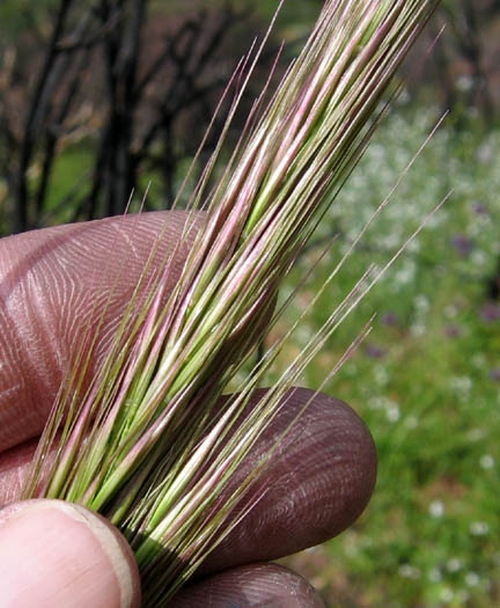
Native to dry, sunny, gravelly, rocky slopes and chaparral areas where elevations climb to 5,000 feet.
- Found mostly in southern California, but will grow in similar local habitats.
- As is with most Achnatherums, it is a cool season grower, flowering in spring on upright culms growing 3 to 6 feet (1-2 m) tall.
- Attractive and suitable for sunny, dry sites.
- Hardy to Zone 8.
Achnatherum hymenoides (Indian rice grass)
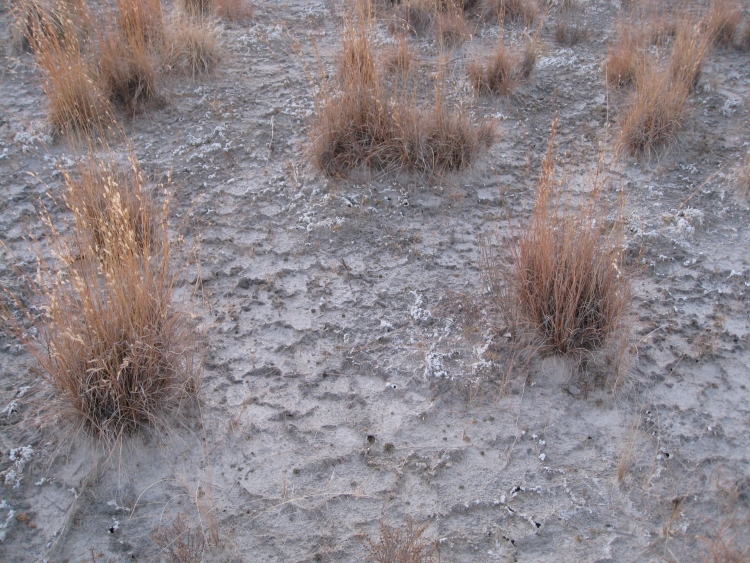
Native to California to British Columbia, where it is found on well-drained or sandy soils in desert shrublands, sagebrush and juniper/pinyon woodlands.
- This delicate, airy grass has suffered from severe habitat destruction due to cattle ranching.
- Fine textured with growth to 2 feet (60 cm) tall.
- A cool season grower with flowering panicles in spring and going dormant for summer.
- Grows well in very dry situations and will die off from excess moisture.
- Hardy to Zone 8.
Achnatherum speciosum (Desert needle grass)
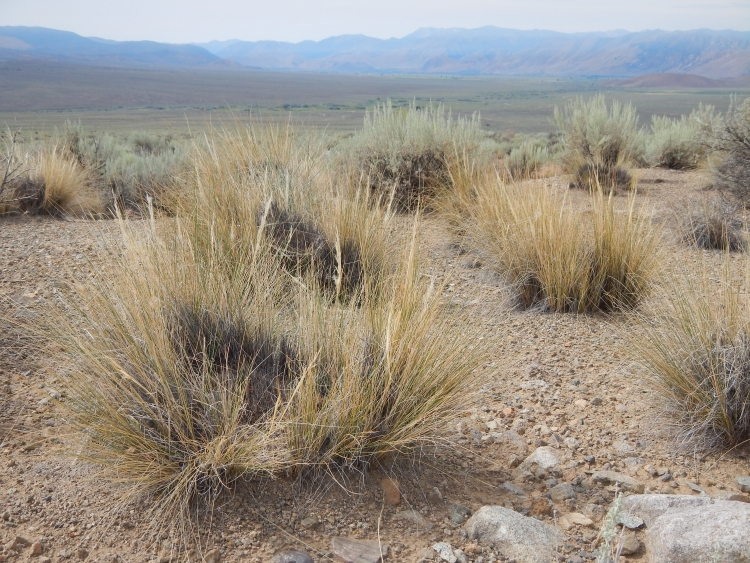
Native to desert communities from California to Colorado and south into Mexico.
- This long lived grass can get by on less than 10 inches of rain per year.
- Extremely fine foliage forms a rounded tuft that turns from gray-green in spring to light brown in winter.
- Flowers appear in early spring and remain fluffy into summer.
- Makes an attractive textural foil for bold cacti and succulent gardens
- Hardy to Zone 8.
Bothriochloa saccharoides (Silver beard grass, silver bluestem)
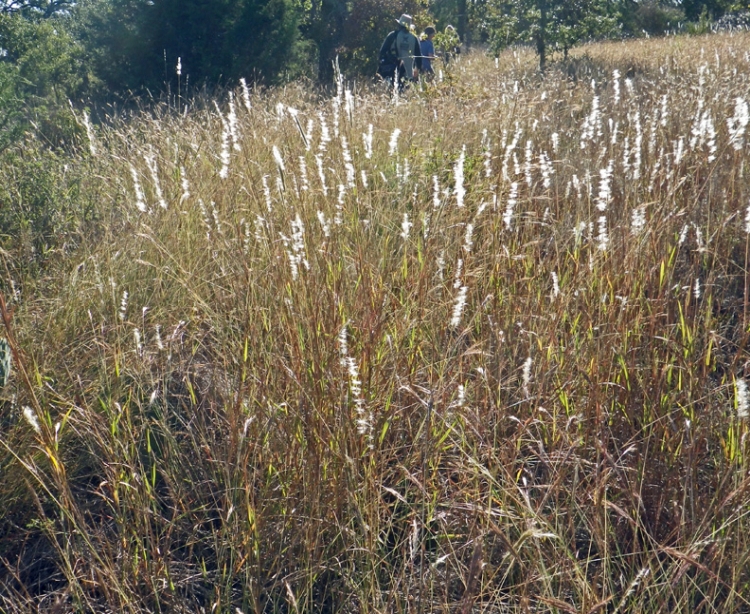
A native ornamental to prairies, plains and dry open places of the southwestern United States.
- Forms upright clumps that grow 3 to 4 feet (90-120 cm) tall. Blooms spring to fall.
- Adapted to hot, dry regions.
- Foliage turns orange and red in autumn and remains colorful into winter.
- Hardy to Zone 5.
Eragrostis spectabilis (Purple lovegrass)

Native ornamental to sandy soil in full sun from Maine to Minnesota to Florida west to Texas, New Mexico and Arizona.
- A warm weather grower, it blooms in late summer.
- Over all height is 2 feet (60 cm) tall and prefers full sun and quite drought tolerant.
- Drifts and sweeps can be a beautiful addition to the late summer landscape.
- Short lived but reseeds it self.
- Hardy to Zone 5.
Melica imperfecta (Coast range melic, foothill melic)
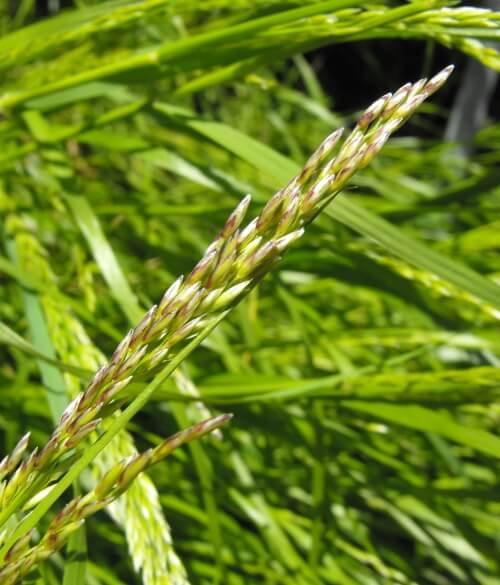
Native to open woodlands, hillsides and chaparrals at low and moderate elevations in coastal California
- Tufted foliage to 2 feet (60 cm) tall.
- Attractive in early spring, but turns dormant in dry summers but quickly greens up with winter rains.
- Ideal for meadow gardens
- Hardy to zone 8.
Muhlenbergia dubia (Pine muhly)
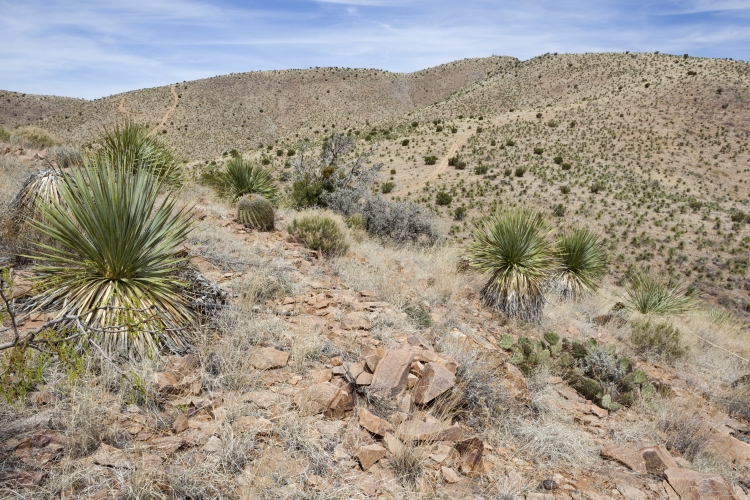
Muhlenbergia is a common grass of the southwest with several species making their mark.
- M. dubia is native to canyons, rocky hills at elevations to 7,000 feet in Texas, New Mexico and north Mexico.
- A clump-forming tufted plant with light green foliage
- Blooms in late summer to early fall growing to 2 to 3 feet (60-90cm0 tall.
- Drought tolerant and prefers full sun.
- Hardy to Zone 7.
Muhlenbergia dumosa (Bamboo muhly)
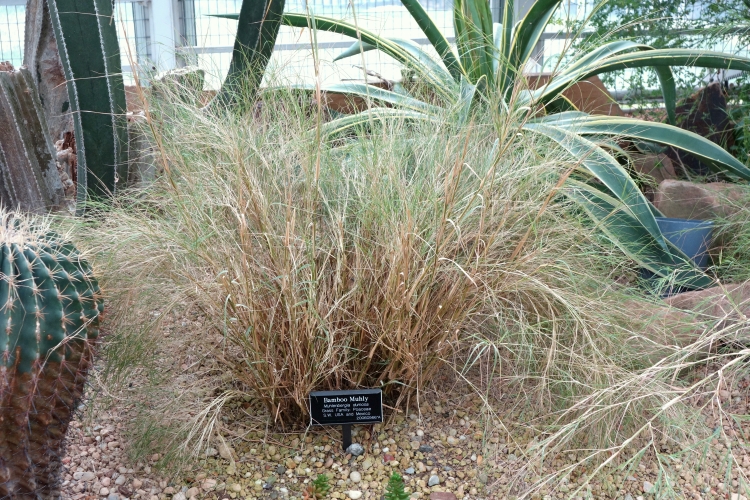
Home to rocky canyons slopes and valleys at low elevations in southern Arizona and Mexico.
- Very distinct from other muhly grasses, with billowing, lacy, bright green foliage and erect arching stems that grow to 4 feet (1.2 m0 tall.
- The over all effect is quite like bamboo.
- A cool weather grower, it blooms in March to May.
- Best with occasional moisture, but will withstand some drought.
- Make a superb container plant.
- Hardy to Zone 8.
Muhlenbergia emersleyi (Bull grass)
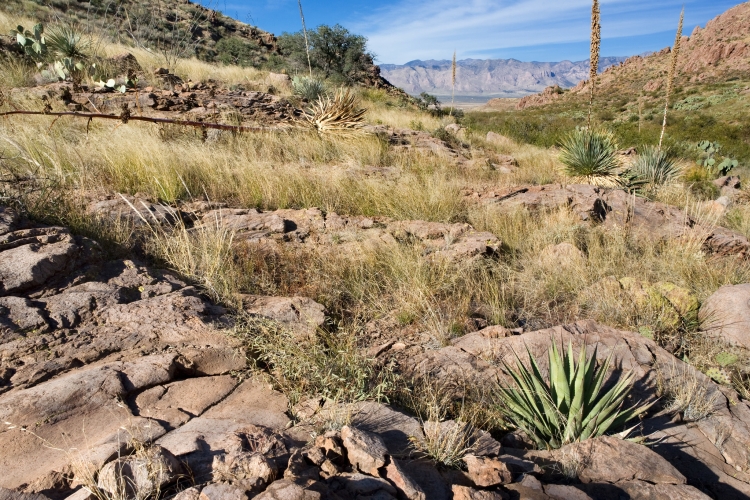
Rocky slopes, woods and canyons in Arizona, New Mexico and Texas.
- Clump forming that blooms in August to November, mostly erect to 3 feet (1 m) tall.
- Drought tolerant in full some to light shade.
- Hardy to Zone 7.
Muhlenbergia lindheimeri (Lindhemeirs muhly)
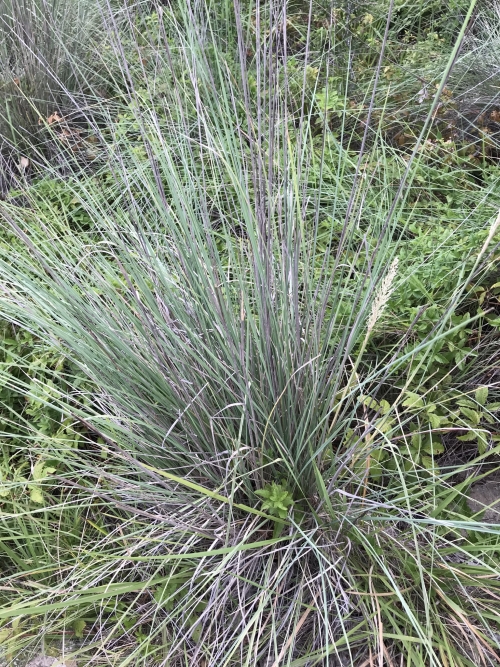
Native to Texas and Mexico.
- A stunning clump former with fine-textured, semi evergreen blue-gray basal foliage.
- Upright to 5 feet (1.5 m) tall.
- Drought and summer heat tolerant. this warm weather grower blooms in September and October. flowers are a light purple-gray.
- Prefers full sun.
- Hardy to Zone 7.
Muhlenbergia rigens (Deer grass)
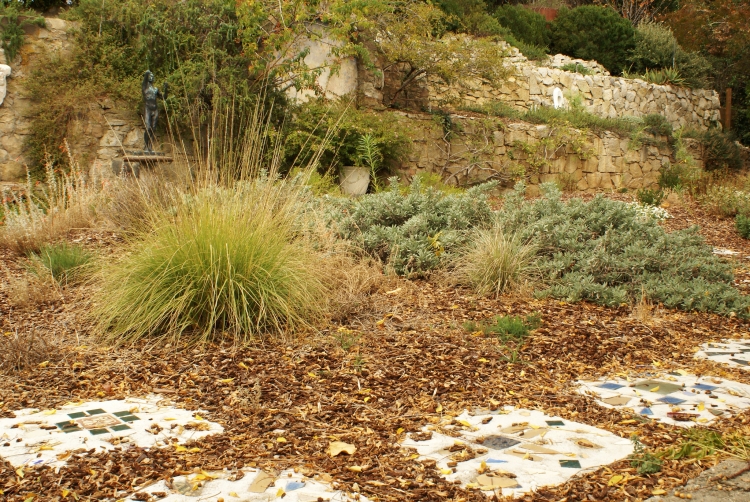
Native to dry or open ground, hillsides, gullies and open woodlands to 7,000 feet in all of the southwest.
- Clump forming with gray green foliage forming a large semi evergreen mound.
- Blooms in late summer with narrow inflorescences whip-like to 5 feet (1.5 m) tall.
- A stunning vertical accent that is very drought tolerant.
- Prefers full sun
- Hardy to Zone 7.
Nassella lepida (Foothill needle grass)
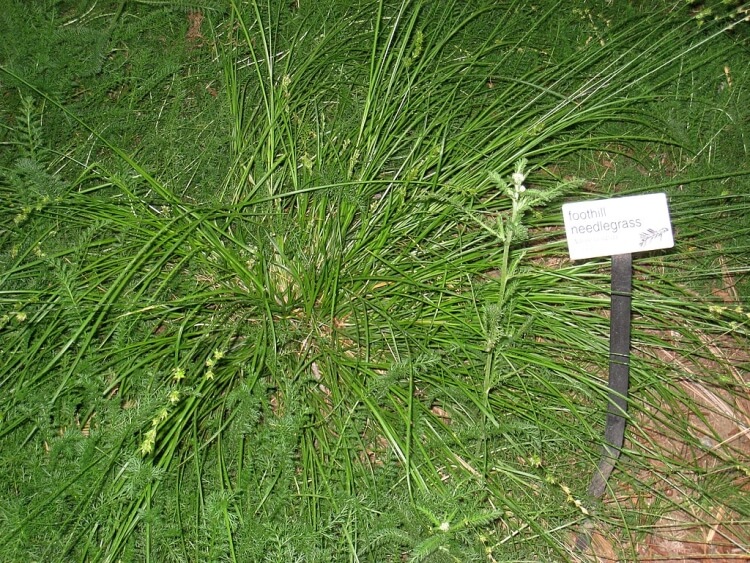
Native to slopes and oak grasslands in California, chaparral, and coastal scrub.
- A clump forming true cool season grower.
- Blooms in late winter or early spring..
- Prefers full sun, best on well drained soil but broadly tolerant.
- Ideal for naturalizing meadows and meadow gardens.
- Hardy to Zone 8.
Panicum virgatum (Common switchgrass)
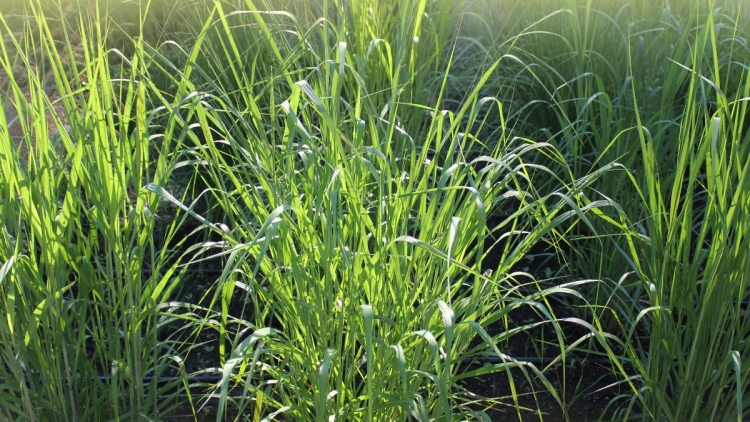
Very attractive ornamentals that are native to prairies and open fields from eastern Canada through most of the United States except the west coast.
- One of the major components of the great American tall-grass prairie. diverse in size, growing 4 to 8 feet (1.2-2.4 m)tall. It always forms recognizable clumps.
- Found in Texas and certain pockets of the southwest.
- Prefers full sun where it grows erect, but will handle partial to light shade where it tends to be more lax.
- Depending on the cultivar, summer foliage can be green , powder-blue and some with streaks of red.
- Very attractive grasses for ornamental purposes in your gardens or for wildlife.
- A warm weather grass with open airy blooms. some are pink or purple with many cultivars being second to none when it comes to ornamental appearance.
- “Dallas blues” grows to 7 feet and has beautiful purple flower heads.
- “Shenandoah” grows to 4 feet and as the season wears on, the blades turn a bright red to almost purple.
- “Prairie fire” is very similar but a bit taller.
- “Cloud nine” is a glaucous blue-green, growing to 8 feet.
- With Panicums, you can’t go wrong and there is a size just right for your garden.
- Panicums are very drought tolerant, erect (even in the winter if the snow isn’t to deep), produces seed for birds and wildlife. Various cultivars (and there are many) offer color as well.
- These warm season growers will add to your habitats
- Another must for any wildlife habitat.
- Check for Zone hardiness as it vary from Zone 3 to Zone 6 depending on the cultivar.
Pleuraphis jamesii (James’ galleta)
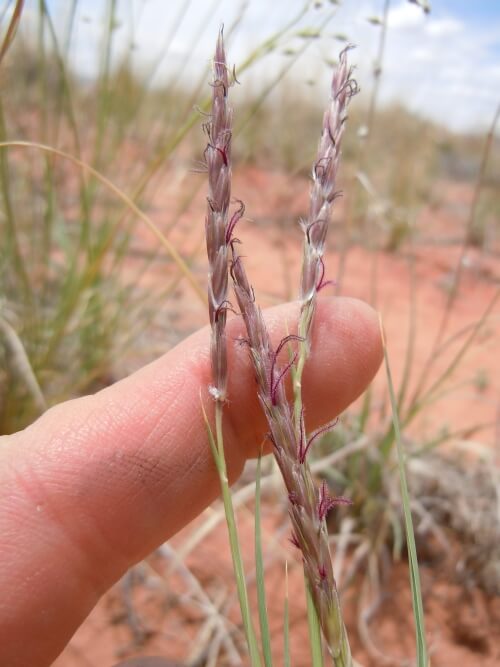
Native to deserts, canyons, and dry plains from California to Texas and even Wyoming.
- Spreads by rhizomes to create a dense mass of upright stems 1 to 2 feet (30 to 60 cm) tall.
- Leaves are green-gray.
- A warm-season grower that blooms in late spring to early summer.
- Upright and very drought tolerant
- Hardy to Zone 8.
Sporobolus airoides (Alkali sacaton, alkali dropseed)
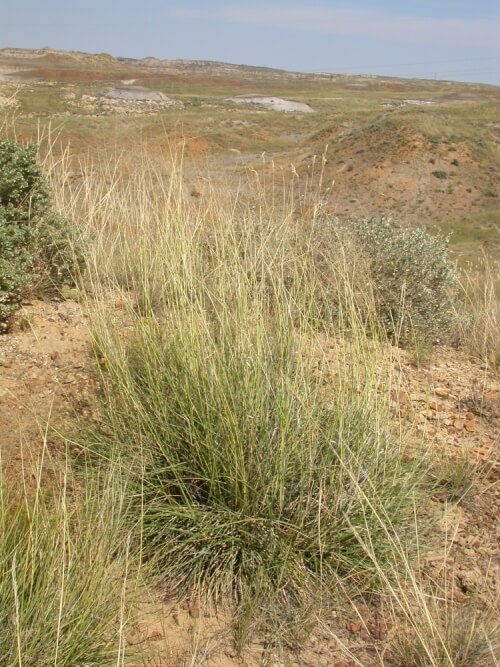
Native to valleys and meadows in California, Arizona, New Mexico, Texas Nevada and Colorado.
- Clump forming of gray-green foliage that grows to feet (1.5 m) tall in bloom.
- Usually blooms in April to June and the foliage turns yellow in the fall.
- Deep rooted and drought tolerant, will grow in a wide range of soils.
- Hardy to Zone 5.
Sporobolus wrightii (Big sacaton, giant sacaton):
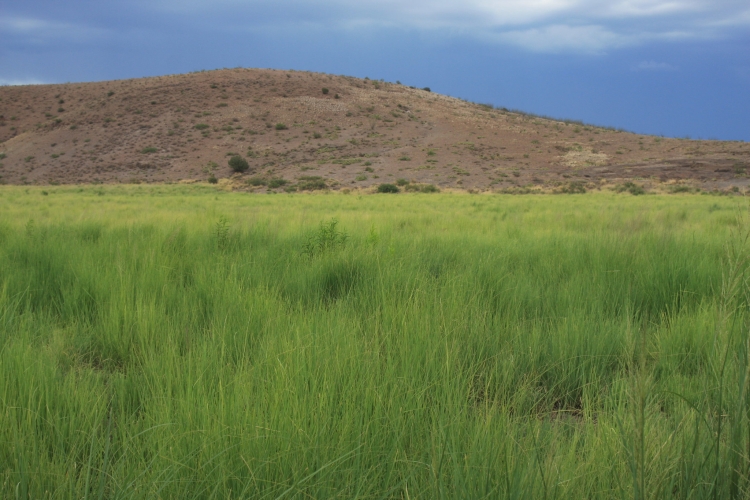
Native to Arizona, west Texas and Oklahoma, growing most often in semi-desert habitats, but also moister situations on floodplains and around desert lakes and marshes.
- One of the larger species in the genus, this clump-former grows to 3 to 6 feet (90-120 cm) tall in flower.
- A grass that deserves more attention in wildlife gardens.
- Hardy to Zone 7.
Even the southwest and deserts have ornamental grasses deserving of your gardens and landscapes.
As with other native plants, check with local garden centers and your state for more information and resources. Never dig up native plants or grasses without the land owner’s permission.
Wildlife and our native plants need your help more than ever to survive. By planting gardens and creating habitats with native plant life you will help to insure wildlife for another generation. Not only are natives more durable than introduced species, they also attract and give wildlife what they need.
